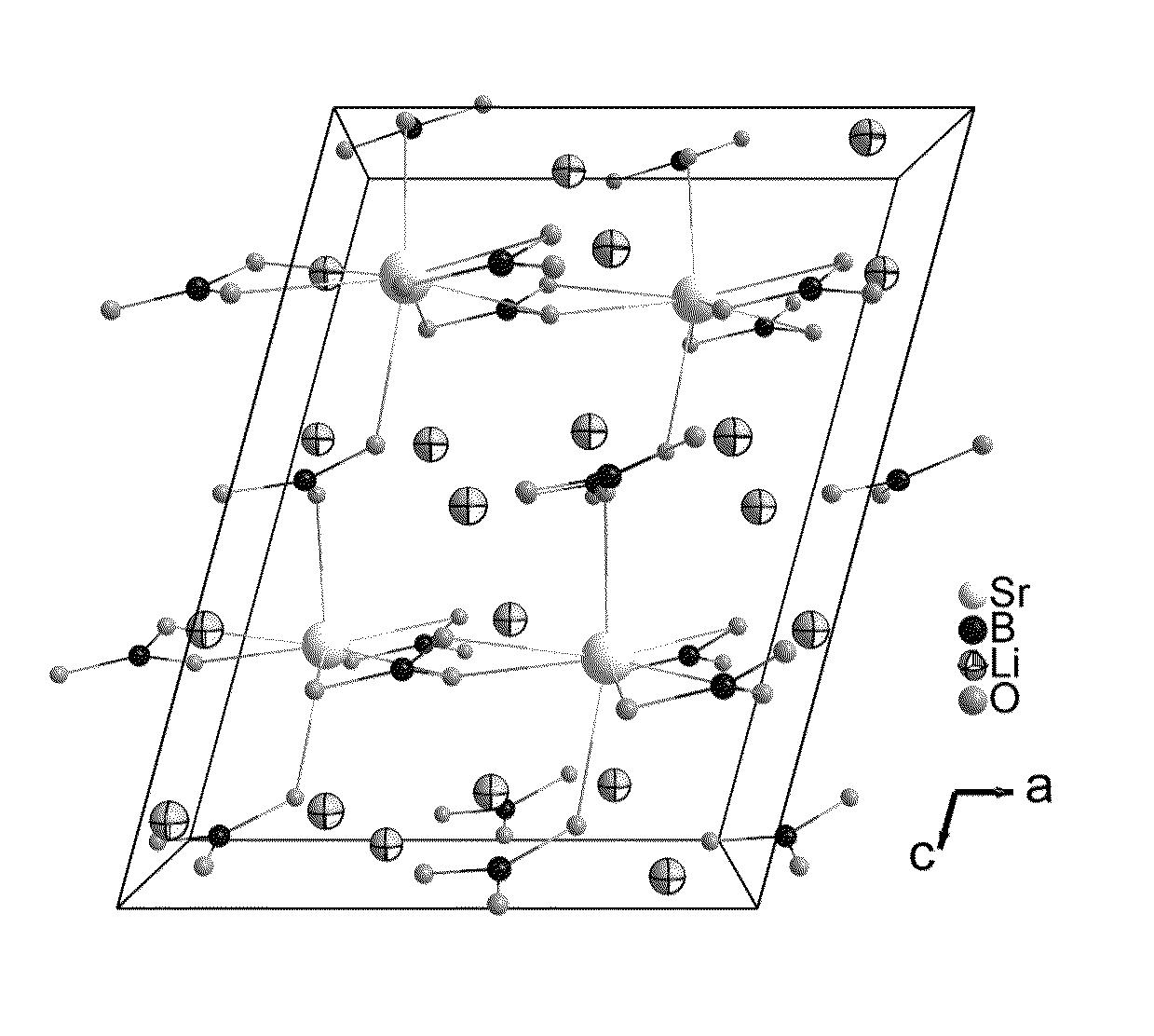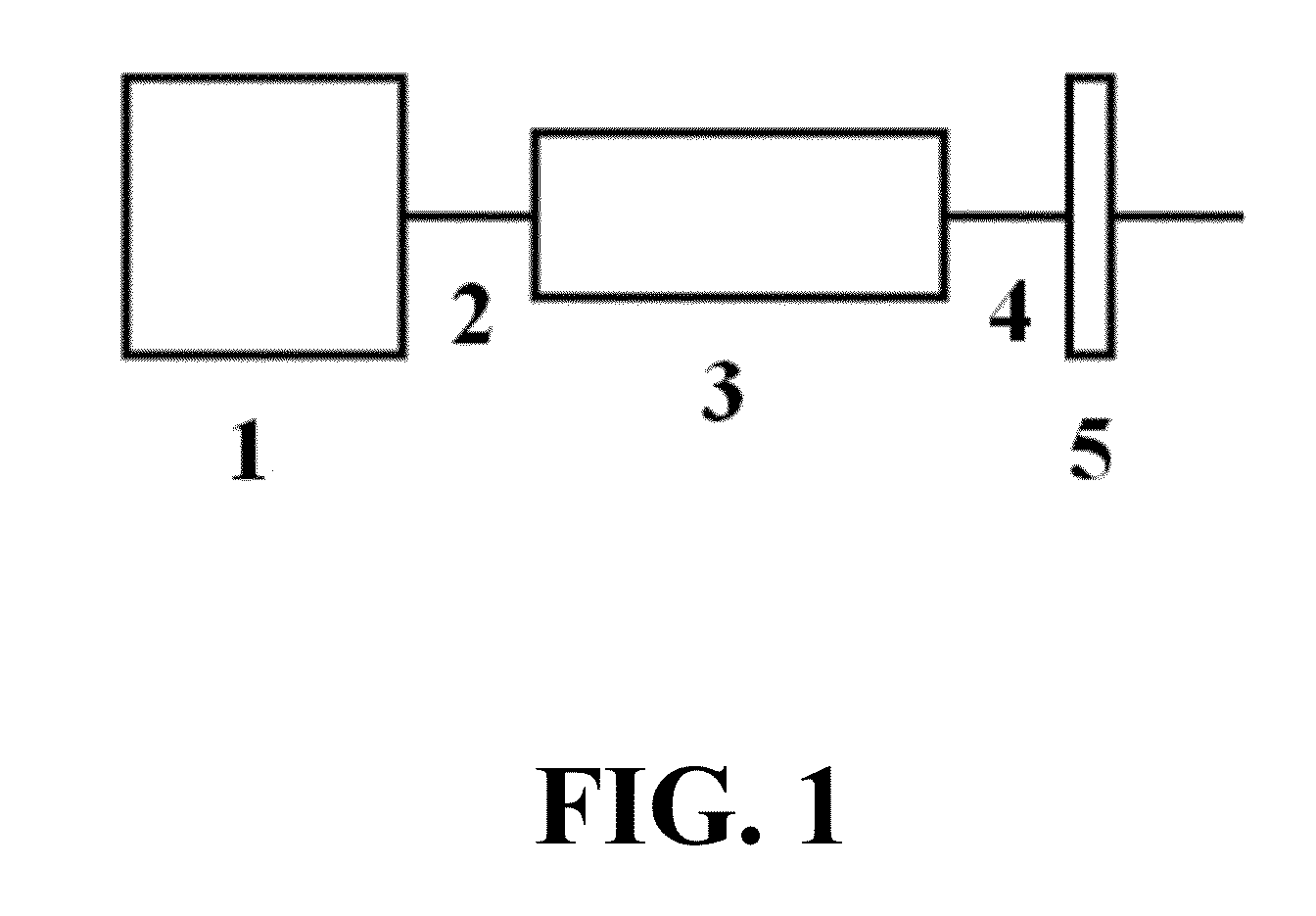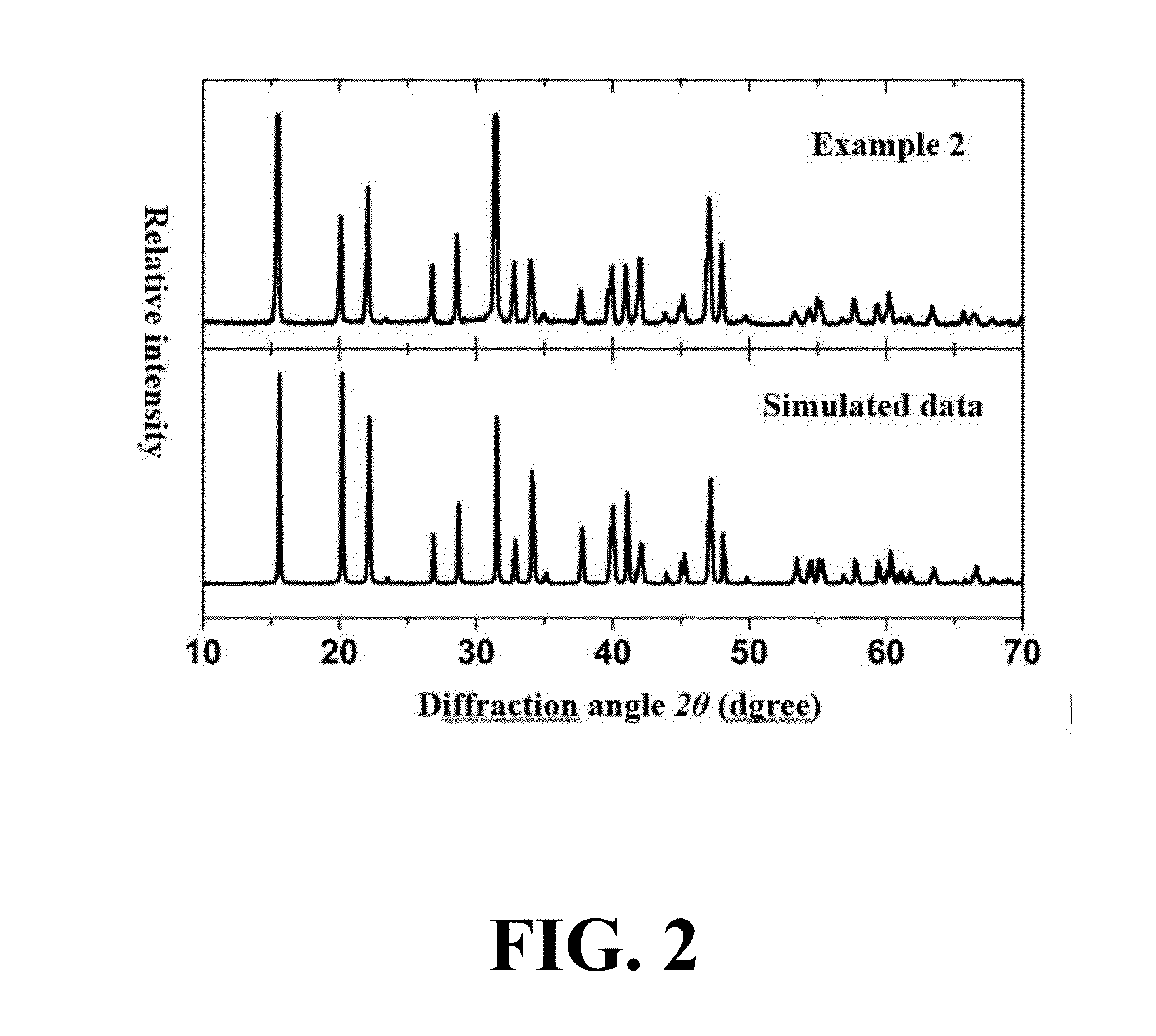Li4Sr(BO3)2 Compound, Li4Sr(BO3)2 Nonlinear Optical Crystal, Preparation Method and Use Thereof
- Summary
- Abstract
- Description
- Claims
- Application Information
AI Technical Summary
Benefits of technology
Problems solved by technology
Method used
Image
Examples
embodiments
[0038]The present invention will be further illustrated with reference to the examples and drawings hereinbelow. A person skilled in the art should know that the following examples do not constitute a limitation of the protection scope of the present invention. Any improvement and modification made based on the present invention should be construed as being within the protection scope of the present invention.
example 1
[0039]A Li4Sr(BO3)2 crystal was grown in a flux agent system of Li2O-B2O3 by flux method.
[0040]Li2CO3, 49.2 g (0.333 mol) SrCO3 and 61.8 g (1.000 mol) H3BO3 (wherein 1.500 mol Li2CO3 and 0.333 mol H3BO3 served as the flux agent) were weighed, mixed and homogeneously ground, and then batch fed into a Ø 60 mm ×60 mm open crucible. The obtained mixture was melted in a muffle furnace at 750° C. Subsequently, it was heated rapidly to 750° C. in a vertical crystal growth furnace, hold at this temperature for 24 hours, and then cooled to 550° C. at a rate of 20° C. / day to precipitate Li4Sr(BO3)2 crystals on the surface of the melt. Finally they were cooled to room temperature at a rate of 50° C. / day. Transparent Li4Sr(BO3)2 crystals were selected and subjected to powder X-ray diffraction analysis. The X-ray pattern was consistent with the simulated pattern based on the analysis result of single crystal X-ray diffraction, as shown in FIG. 2. Therefore, the obtained crystal was the Li4Sr(BO3...
example 2
[0042]A Li4Sr(BO3)2 crystal was grown in a flux agent system of Li2O-B2O3-LiF by flux method.
[0043]135.5 g (1.833 mol) Li2CO3, 49.2 g (0.333 mol) SrCO3, 61.8 g H3BO3 (1.000 mol) and 8.6g (0.333 mol) LiF (wherein 1.167 mol Li2CO3, 0.333 mol H3BO3 and 0.333 mol LiF served as the flux agent) were weighed, mixed and homogeneously ground, and then batch fed into a Ø 60 mm ×60 mm open crucible. The obtained mixture was melted in a muffle furnace at 750° C. Subsequently, it was heated rapidly to 750° C. in a vertical crystal growth furnace, hold at this temperature for 24 hours, and then cooled down rapidly to 10° C. above the saturation temperature. A seed crystal rod fitted with the seed crystal was slowly inserted into the melt in the crucible, and the rotation unit at the top of the seed crystal rod was started with a rotation speed of 35 rpm. The temperature was hold for half an hour, cooled down rapidly to the saturation temperature, and then cooled at a rate of 0.8° C. / day. After th...
PUM
 Login to View More
Login to View More Abstract
Description
Claims
Application Information
 Login to View More
Login to View More - R&D
- Intellectual Property
- Life Sciences
- Materials
- Tech Scout
- Unparalleled Data Quality
- Higher Quality Content
- 60% Fewer Hallucinations
Browse by: Latest US Patents, China's latest patents, Technical Efficacy Thesaurus, Application Domain, Technology Topic, Popular Technical Reports.
© 2025 PatSnap. All rights reserved.Legal|Privacy policy|Modern Slavery Act Transparency Statement|Sitemap|About US| Contact US: help@patsnap.com



